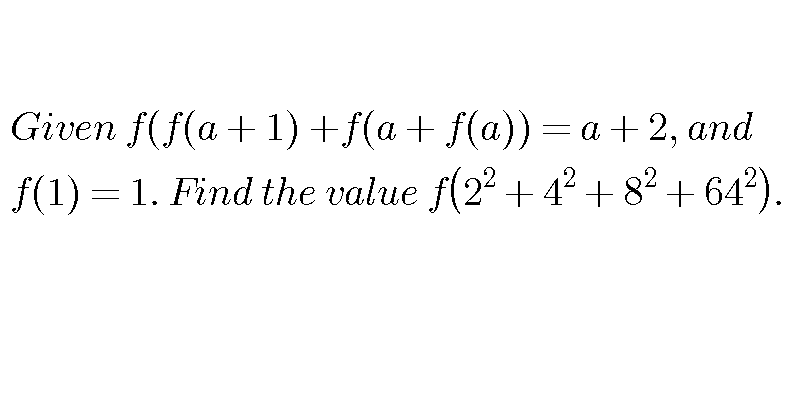
Question and Answers Forum
AllQuestion and Answers: Page 1824




Pg 1819 Pg 1820 Pg 1821 Pg 1822 Pg 1823 Pg 1824 Pg 1825 Pg 1826 Pg 1827 Pg 1828
|
Question and Answers Forum |
AllQuestion and Answers: Page 1824 |
| Find all pair of solutions (x,y) that satisfy the equation: ((7x^2 − 13xy + 7y^2 ))^(1/3) = ∣x − y∣ + 1 |
| How many four-digit numbers are there whose decimal notation contains not more than two distinct digits? |
| The three distinct successive terms of an A.P are the first,second and fourth terms of a G.P. If the sum to infinity of a G.P is 3+(√5) , find the first term. |
| ∫(√(secθ)) dθ |
| ∫3tan2t |
| ∫_0 ^(0.5) 2tan^2 2tdt |
| One end of a massless spring of constant 100 N/m and natural length 0.5 m is fixed and the other end is connected to a particle of mass 0.5 kg lying on a frictionless horizontal table. The spring remains horizontal. If the mass is made to rotate at an angular velocity of 2 rad/s, find the elongation of the spring. |
| Is it also possible to import text or fomulars from other apps using the android−clipboard? |
| If sec x + tan x = 2012 then 2011(cosec x + cot x) is equal to (A) 2011 (B) 2012 (C) 2013 (D) ((2011)/(2013)) (E) ((2013)/(2012)) |
| (1/(1 + 1^2 + 1^4 )) + (2/(1 + 2^2 + 2^4 )) + (3/(1 + 3^2 + 3^4 )) + ... + ((2012)/(1 + 2012^2 + 2012^4 )) |

|
| Sin5° =? |
| How many six-digit numbers contain exactly four different digits? |
| A particle will leave a vertical circle of radius r, when its velocity at the lowest point of the circle (v_L ) is (a) (√(2gr)) (b) (√(5gr)) (c) (√(3gr)) (d) (√(6gr)) |

|
| Prove that ((n^2 !)/((n!)^n )) is an integer, n ∈ N. |
| Show that if G is a finite group of even order, then G has an odd number of elements of order 2. |
| If n objects are arranged in a row, then find the number of ways of selecting three of these objects so that no two of them are next to each other. |
| 5cos^5 tsin t |
| 3sec^2 3xtan3x |
| ∫_(π/2) ^(π/4) (3x+7) |

|

|
| Find the whole part of A? A=(1/(√2))+(1/(√3))+(1/(√4))+......+(1/(√(9999)))+(1/(√(10000))). |
| The cyclic octagon ABCDEFGH has sides a, a, a, a, b, b, b, b respectively. Find the radius of the circle that circumscribes ABCDEFGH in terms of a and b. |
| Prove that 1 < (1/(1001)) + (1/(1002)) + (1/(1003)) + ... + (1/(3001)) < 1(1/3). |
Pg 1819 Pg 1820 Pg 1821 Pg 1822 Pg 1823 Pg 1824 Pg 1825 Pg 1826 Pg 1827 Pg 1828 |